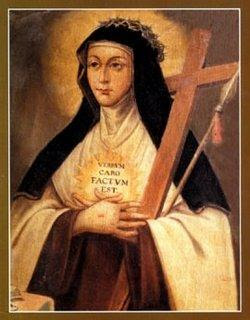St. Joan of Arc

St. Joan of Arc is the patroness of soldiers and of France. On January 6, 1412, Joan of Arc was born to pious parents of the French peasant class, at the obscure village of Domremy, near the province of Lorraine. At a very early age, she heard voices: those of St. Michael, St. Catherine and St. Margaret.
At first the messages were personal and general. Then at last came the crowning order. In May, 1428, her voices "of St. Michael, St. Catherine, and St. Margaret" told Joan to go to the King of France and help him reconquer his kingdom. For at that time the English king was after the throne of France, and the Duke of Burgundy, the chief rival of the French king, was siding with him and gobbling up evermore French territory.
After overcoming opposition from churchmen and courtiers, the seventeen year old girl was given a small army with which she raised the seige of Orleans on May 8, 1429. She then enjoyed a series of spectacular military successes, during which the King was able to enter Rheims and be crowned with her at his side.

In May 1430, as she was attempting to relieve Compiegne, she was captured by the Burgundians and sold to the English when Charles and the French did nothing to save her. After months of imprisonment, she was tried at Rouen by a tribunal presided over by the infamous Peter Cauchon, Bishop of Beauvais, who hoped that the English would help him to become archbishop.
Through her unfamiliarity with the technicalities of theology, Joan was trapped into making a few damaging statements. When she refused to retract the assertion that it was the saints of God who had commanded her to do what she had done, she was condemned to death as a heretic, sorceress, and adulteress, and burned at the stake on May 30, 1431. She was nineteen years old. Some thirty years later, she was exonerated of all guilt and she was ultimately canonized in 1920, making official what the people had known for centuries. Her feast day is May 30.
It is said that after her body was burnt, they all beleived that nothing remained there, but they were wrong...one thing did remain there...the loveliest part of the human body remained there...her heart. Her heart remained uncorrupted by the fire and remain whole in the love for God.


